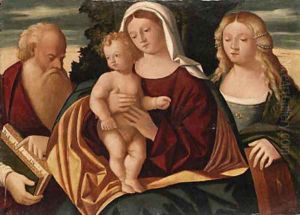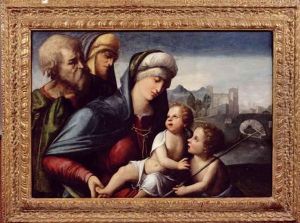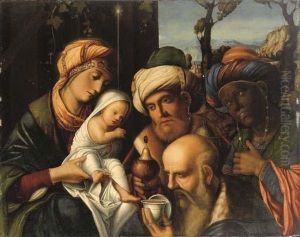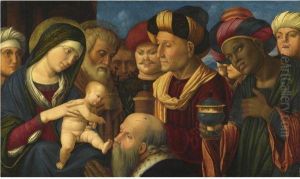Francesco Rizzo Da Santa Croce Paintings
Francesco Rizzo da Santa Croce was an Italian painter who flourished in the 16th century, during the Renaissance period. Although specific details regarding his birth and death are not well-documented, he is believed to have been born around the year 1500 in Santa Croce, a town near Bergamo in the region of Lombardy, Italy, and to have died around 1560.
Francesco Rizzo's artistic career is somewhat obscure, and he is not as well-known as some of his contemporaries. However, he is recognized for his contributions to the Venetian school of painting. Venice during the 16th century was a vibrant center for the arts, with a distinctive style that was characterized by rich color and a masterful handling of light. Rizzo's work, while not as famous as that of Titian or Tintoretto, still reflects the influence of the Venetian style, which often emphasized dramatic effects and sumptuous detail.
Very little is known about Rizzo's training or early work. It is presumed that he was exposed to the works of the Venetian masters and that his style evolved from the prevailing artistic trends of the time. His paintings often featured religious subjects, which were common among artists of his era, particularly in Italy, where the Roman Catholic Church was a major patron of the arts.
One of Rizzo's most notable works is the altarpiece in the church of San Giuliano in Venice, which showcases his ability to compose complex scenes with multiple figures and demonstrates his skillful use of color. This work, along with a handful of others attributed to him, provides valuable insight into his artistic approach and the aesthetic preferences of the period in which he worked.
Unfortunately, due to the limited number of surviving works confidently attributed to him and the general scarcity of historical records pertaining to his life, Francesco Rizzo da Santa Croce remains a somewhat enigmatic figure in the history of Renaissance art. Nonetheless, his contributions to the Venetian school are recognized by art historians who have studied the period and its painters.





